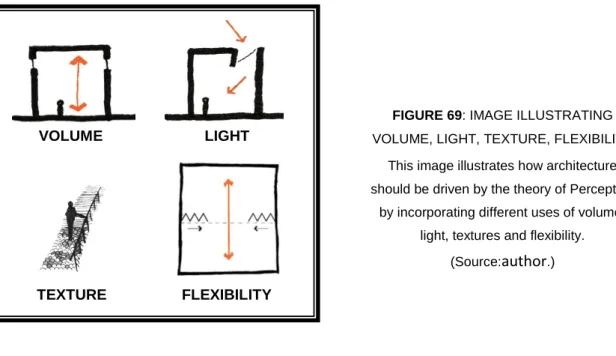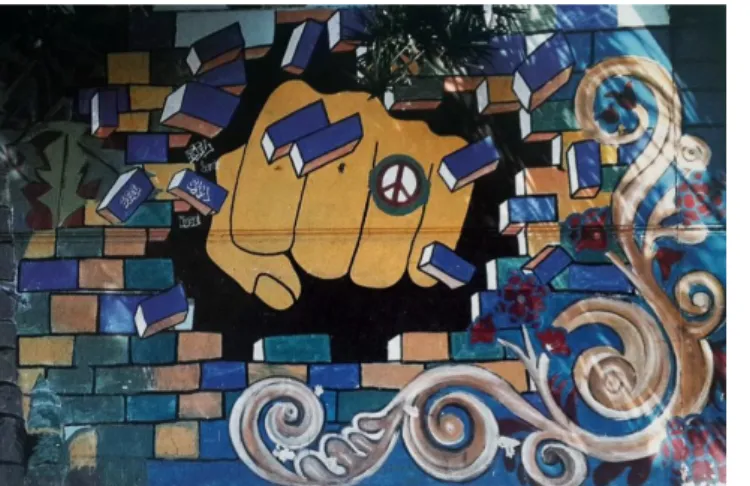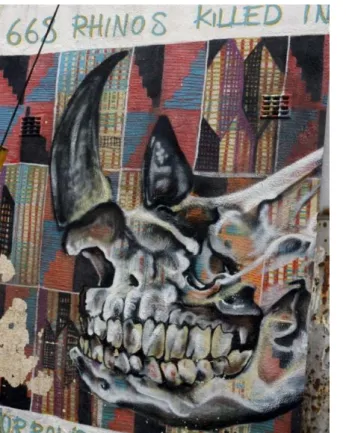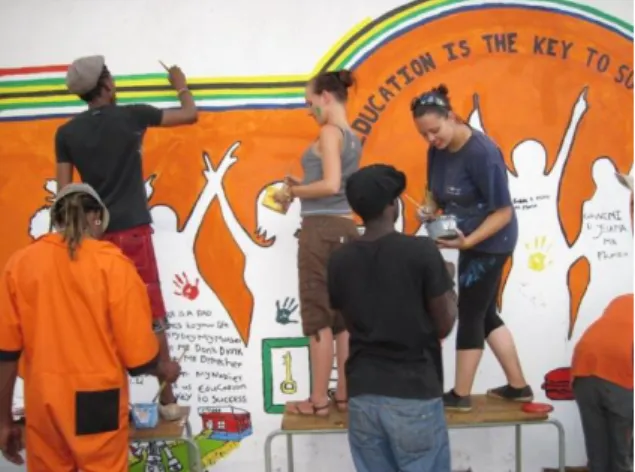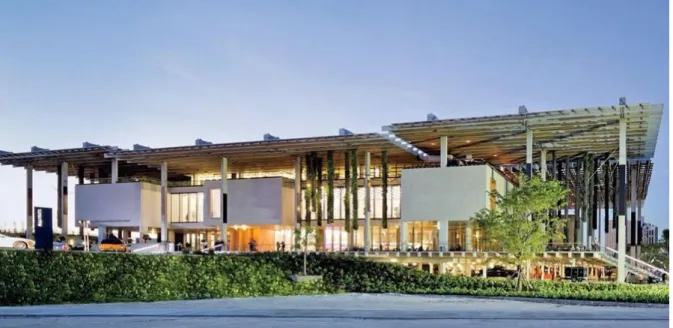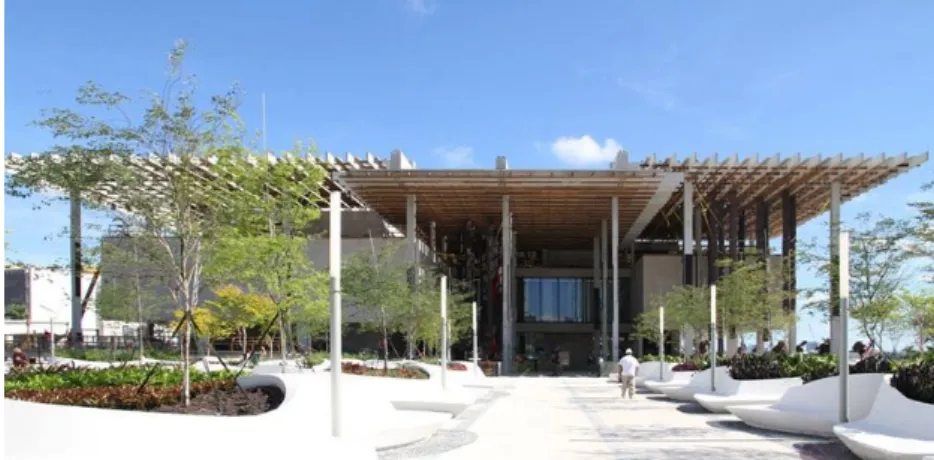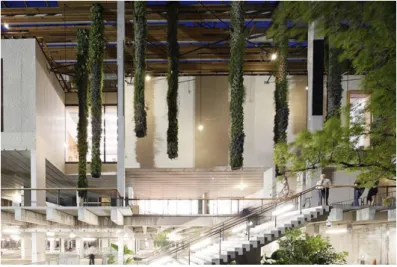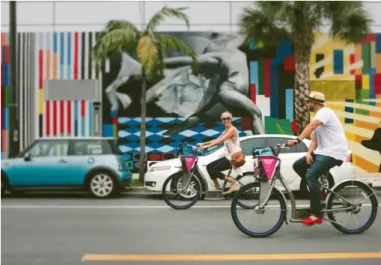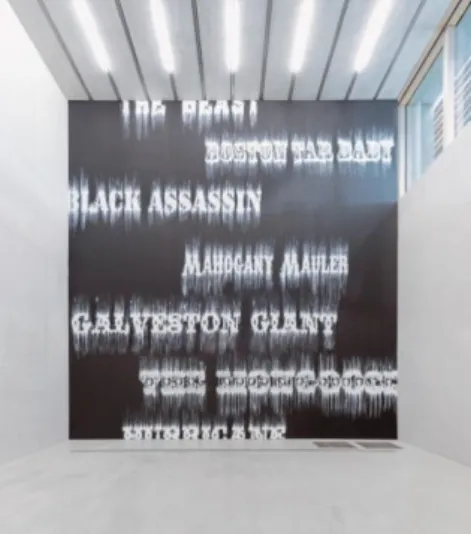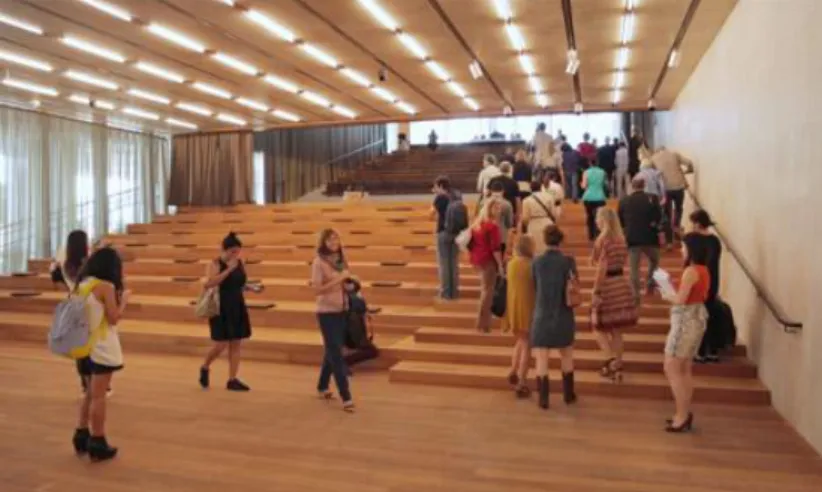The dissertation explores wall art in architecture and its ability to act as a catalyst for social revitalization. Research has proven that active and passive participation in wall art has different social benefits.
INTRODUCTION
INTRODUCTION
RESEARCH TOPIC
- Background
- Justification of the Study
Murals do not require any kind of literacy or education to be seen and perceived. Therefore, this research will examine the role of mural art in architecture as a catalyst for social revitalization.
DEFINITION OF THE PROBLEM, AIMS AND OBJECTIVES
- Definition of the Problem
- Dissertation Aim
- Key Objectives
Mural painting has the ability to facilitate social discussion through viewing the artwork and participating in the creation of the artwork.
SETTING OUT THE SCOPE
- Delimitation of the Research Problem
- Definition of Key Terms
- Stating the Assumptions
- Key Questions
Mural art, derived from the Latin word murus meaning 'wall', murals refer to artwork or decoration painted or mounted directly on a wall. It can be assumed that murals are able to provide a platform for city users to cross paths and form a level of social capital.
CONCLUSION
INTRODUCTION
LOCATION OF STUDY
RESEARCH METHODOLOGY AND MATERIALS
- Research Methods
- Primary Methods
- Secondary Methods
The literature will be used to gain a broader understanding of mural art, perception, social capital, social revitalization, and art centers. Local and international case studies of art center related buildings will be explored as well as case studies of existing art center related studies to gain first hand experience and understanding.
VALIDITY, RELIABILITY AND RIGOUR
Data will be analyzed through content analysis by looking at documents and field notes to find categories which will be coded to find consistencies and differences in the information which can then be narrowed down to be used in the study findings. Triangulation methods will be used to capture different dimensions of the same phenomenon; interviews, observation and case studies.
CONCLUSION
INTRODUCTION
INTRODUCTION TO KEY THEORIES
- Theory of Perception
- Theory of Social Capital
Strong social capital therefore affects economic development and therefore affects the relationship with the government. Social capital theory focuses attention on positive consequences of sociability as well as the positive consequences that in turn affect capital, sources of power and influence.
INTRODUCTION TO CONCEPTS
- Mural art
- Social Revitalisation
- Art Centre
Social revitalization refers to giving new life, vitality and cohesion to the social life of all members of society, especially previously socially excluded individuals or groups. The concept of an arts center is a multi-space meeting place that creates opportunities for different members of the community to participate in a variety of events and activities.
CONCLUSION
The arts center would be committed to the local community as well as attract a wide variety of audiences. During the apartheid era, many art centers were opened as an alternative education for ordinary and disadvantaged members of society.
INTRODUCTION
The theory of perception will be explored through the literature of Arnheim, Curtin, Gartus, Korascik and Norberg, this will provide a basis for answering the research questions; how does the mural affect the perceptions of Durban city users. The theory of social capital will be explored through the literature of Baerenholdt, Ilja, Portes, Rich and Woolcock, this will provide the basis for answering the research.
MURAL ART
- MURAL ART AND THE THEORY OF PERCEPTION
- BOTTOM-UP PROCESS
- TOP-DOWN PROCESS
- GESTALT THEORY
- MURAL ART AND THE THEORY OF SOCIAL CAPITAL
- The Networks View
An important aspect of the environment that the mural is in is the people that the mural serves. Research into the conflicting evidence for the perception of mural art explains that the perceived meaning of the mural may not reflect the artist's intended meaning.
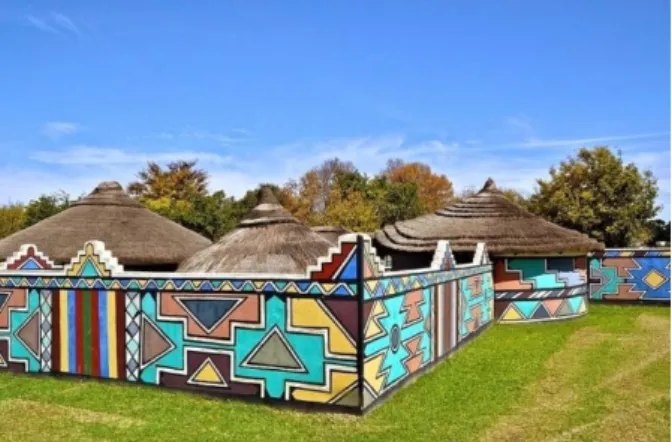
MURAL ART – PASSIVE PARTICIPATION
- MURAL ART AND THE THEORY OF SOCIAL CAPITAL IN PASSIVE PARTICIPATION
- Fleeting relationships
- Quasi-primary relationships
- Person to place connections
Murals act as an open source of information, such as the rhino skull mural in Figure 10. This image is a representation of rhino poaching in South Africa and how murals can raise awareness to support education.
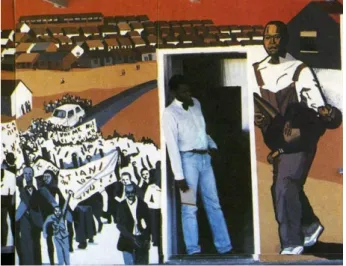
MURAL ART – ACTIVE PARTICIPATION
- MURAL ART AND THE THEORY OF SOCIAL CAPITAL IN ACTIVE PARTICIPATION
- Routinized relationships
Active participation in murals provides a stronger form of social capital than passive participation. This social capital, in terms of the network view, will be that of strong social capital. Social capital ensures that trust can be built between people who may be strangers to each other.
Social capital increases people's individual and collective awareness of the connections and networks between each other.
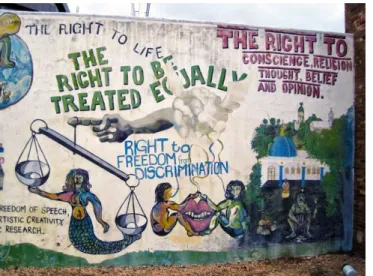
SOCIAL REVITALISATION
- MURAL ART AND SOCIAL REVITALISATION
- EDUCATION
- EMPLOYABILITY
- HEALTH
- PERSONAL DEVELOPMENT
- SOCIAL COHESION
- SOCIAL PRIDE
As already mentioned; active and passive participation in wall art acts as an open source of information and aid in education. Passive participation in wall art contributes to an individual's personal networks and thus to their social capital. However, active participation in mural art has far-reaching positive effects, especially for socially excluded individuals, groups or communities.
Passive and active participation in mural art brings people together, art and culture are said to be important in a sustainable community.
THE ART CENTRE
- ART CENTRES AND THE THEORY OF PERCEPTION
- AUDITORY SPACE
- OLFACTORY SPACE
- TACTILE SPACE
- ART CENTRES AND THE THEORY OF SOCIAL CAPITAL
Therefore, the context of a work of art can influence the perception of art, but this perception is unique to each individual. This image is a representation of the senses to be included in the design of the art center along with a vision to enhance the multi-sensory experience and include all members of society. The art center is a representation of the community and the context in which it is located.
The art center must be an extension of the artwork itself, a multi-sensory home for the mural as well as the context and the city's users.
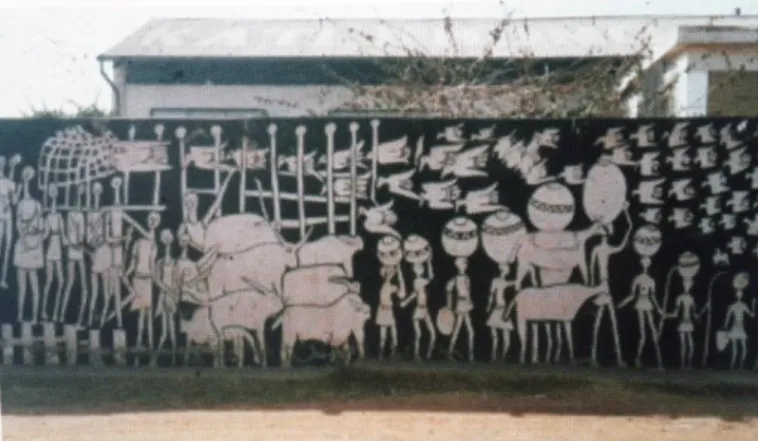
CONCLUSION
The passive participation of mural art together with the theory of social capital is able to facilitate various encounters between strangers through which relationships can be formed. The passive participation of mural painting can socially benefit viewers by acting as a platform for social capital to emerge. The available literature shows that mural painting can play a role in working against social exclusion.
Mural art therefore has many social benefits and can act as a catalyst for social regeneration.
INTRODUCTION
This chapter provides an analysis of two existing buildings in the context of the relevant research. The buildings that will be analyzed are an international example of the typology in question in this study and a national example of a community-inclusive building incorporating murals.
THE PÉREZ ART MUSEUM MIAMI (PAMM)
- BACKGROUND
- JUSTIFICATION OF STUDY
- THEORY OF PERCEPTION
- MURAL ART AND THE PÉREZ ART MUSEUM
- THEORY OF SOCIAL CAPITAL
- THE ART CENTRE AND THE PÉREZ ART MUSEUM
- CONCLUSION
This image shows the location of the Pérez Art Museum in the city of Miami, Florida, USA. The mission statement of the Pérez Art Museum Miami states that the building exists to improve the quality of life for individual residents of and visitors to Miami-Dade County. The use of murals in the Pérez Art Museum is found on the inside of the building, there are no murals on the outside of the building.
The Pérez Art Museum's mission statement states that the building exists to improve the quality of life for individual Miami-Dade County residents and visitors.
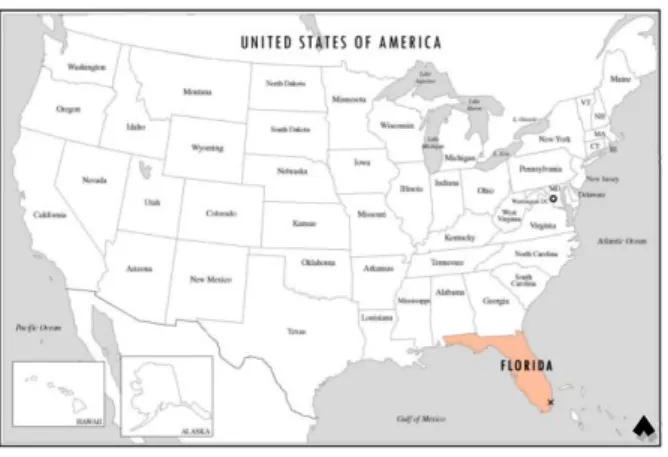
THE HUMAN SETTLEMENTS CONTACT CENTRE, MANENBERG
- BACKGROUND
- JUSTIFICATION OF STUDY
- THEORY OF PERCEPTION
- MURAL ART AND THE HUMAN SETTLEMENTS CONTACT CENTRE
- THEORY OF SOCIAL CAPITAL
- THE ART CENTRE AND THE HUMAN SETTLEMENTS CONTACT CENTRE
- CONCLUSION
The implementation of the Human Settlements Contact Center aims to serve the community in which it is located; the center provides a number of services to the community. The Human Settlements Contact Center is seen as an investment in the Manenberg community. investments that can contribute to social revitalization of the community. Although the function of the Human Settlements Contact Center is purely service-oriented, the design of the building involves the community throughout the building.
Speaking at the opening of the building, Cape Town Mayor Patricia de Lille said the center will “promote inclusivity, opportunity and efficiency” and “act as a beacon of our commitment to leading Cape Town's social development.” The building's design therefore embraces the potential to promote a social revitalization of the Manenberg community.
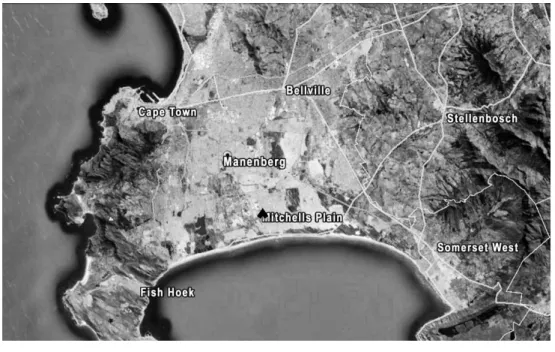
INTRODUCTION
FAITH47 WARWICK JUNCTION MURALS, DURBAN
- BACKGROUND
- JUSTIFICATION OF STUDY
- THEORY OF PERCEPTION
- MURAL ART AND WARWICK JUNCTION
- THEORY OF SOCIAL CAPITAL
Image illustrating the location of the Faith47 Murals in Warwick Junction on the edge of Durban's main area. One trader in Warwick Junction said that Mr Singh's mural, as shown in Figure 49, reminded him of his grandfather watching over him. The murals therefore reflect the perception of life representations of the meaning of everyday people, regardless of their race.
The Faith47 mural installation in Warwick Junction has attracted a diverse network of people to the market; people interested in murals, artwork and revitalization.
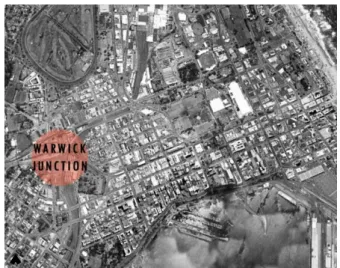
CONCLUSION
BARTEL ARTS TRUST (BAT CENTRE), DURBAN
- BACKGROUND
- JUSTIFICATION OF STUDY
- THEORY OF PERCEPTION
- MURAL ART AND THE BAT CENTRE
- THEORY OF SOCIAL CAPITAL
- THE ART CENTRE AND THE BAT CENTRE
Therefore, the functions of the BAT center are related to the functions of the Art Center in this research. Image illustrating the welcoming, festive perception of the BAT center as well as the barrel. The location of the BAT center does not allow "passers-by" to see the mural art, the locality transforms the center into a destination building, as shown in figure 59.
The murals represent the welcoming, playful nature of downtown as well as the city of Durban.
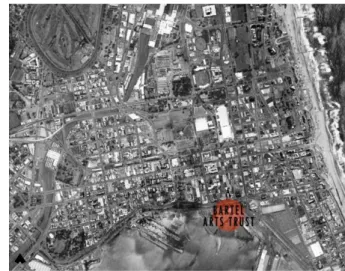
CONCLUSION
INTRODUCTION
ANALYSIS OF THEORIES
- PERCEPTION
- SOCIAL CAPITAL
Three of the sixteen interviewees were not interested in the wall art when passing by, and thirteen of the sixteen answered the question positively. Three out of four interviewees described the ideal space for teaching and exhibiting wall art as large, open and minimalistic. The literature review of this research explores the theory of social capital in mural art.
Fifteen out of the sixteen interviewees believed that murals can help inform people, and one of the interviewees believed that murals cannot help inform people.
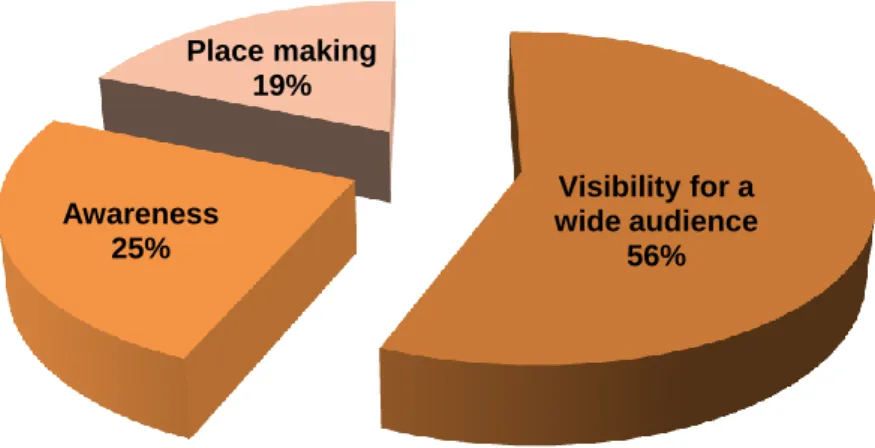
CONCLUSION
These answers, together with the literature review, therefore show how, through the theory of social capital, art centers are able to contribute to social revitalization. This answer, together with the literature review, therefore shows how, through the theory of social capital, art centers are able to socially benefit the city's users. The interviews with members of the Durban arts center revealed that arts centers can benefit people socially as they provide a place for people to meet and network, this therefore together with the literature review on social capital in this research shows how arts centers are able to help towards a social revitalization.
Therefore, these responses together with the literature review show how art centers through social capital theory are able to socially benefit city users.
INTRODUCTION
This chapter will be broken down in a similar way to the previous chapters by separating the theories and how they worked together with the concepts throughout the thesis to provide conclusions and recommendations to the research.
CONCLUSIONS
The architecture should be "bare" to emphasize the wall art while serving its context and providing easy accessibility. The findings in this research are that wall art and architecture together have endless possibilities and together; they enable a positive contribution and can have a major social impact on the city of Durban.
RECOMMENDATIONS
The functions of the building should serve different people around the theory of social capital. Wall art should be explored in architecture through a variety of indoor and outdoor uses to reach a wide audience. Wall art should allow for flexibility to ensure that the artwork can be changed easily, as shown in image 70.
The Community Arts Project (CAP): The Role of the Arts in Community Building and Artistic Development.
